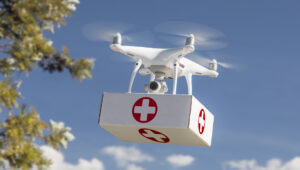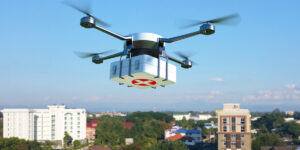Introduction:
The healthcare industry is no stranger to technological advancements, and one of the latest additions to its arsenal is the use of drones. Unmanned Aerial Vehicles (UAVs) are making a significant impact in various aspects of healthcare, offering innovative solutions that enhance efficiency, accessibility, and patient care. In this blog, we’ll explore the diverse ways in which drones are revolutionizing the medical industry.
Medical Supply Chain Management:
Drones are proving to be a game-changer in the logistics and supply chain management of medical supplies. In remote or hard-to-reach areas, drones are used to transport essential medical goods such as vaccines, medications, blood, and diagnostic samples. This ensures timely delivery, especially in emergency situations or during natural disasters, where conventional transportation may be hindered.
Emergency Medical Services:
In emergency situations, swift response is crucial. Drones equipped with medical kits, defibrillators, or even automated external defibrillators (AEDs) can be dispatched to the scene of an accident or a medical emergency. These airborne first responders can reach the location faster than traditional ambulances, providing critical care until human responders arrive.

Remote Patient Monitoring:
Drones equipped with specialized sensors and cameras can be employed for remote patient monitoring. In rural or underserved areas, where healthcare facilities may be limited, drones can transport monitoring devices to patients, collect vital signs, and transmit the data back to healthcare professionals. This not only facilitates proactive healthcare but also improves the management of chronic conditions.
Medical Sample Transport:
Drones are being utilized to transport medical samples between healthcare facilities and laboratories quickly. This is particularly beneficial for time-sensitive tests and diagnostic procedures, ensuring that results are delivered promptly, leading to faster treatment decisions.
Telemedicine Support:
Drones play a role in supporting telemedicine initiatives by transporting medical equipment or supplies to remote locations. In situations where a physical presence is required, such as delivering medical imaging devices or specialized tools, drones bridge the gap, providing healthcare professionals access to necessary resources.

Disaster Response and Relief:
During natural disasters or pandemics, drones can be instrumental in assessing the impact on healthcare infrastructure, delivering medical supplies to affected areas, and conducting search and rescue operations. Drones equipped with thermal imaging cameras can help identify survivors in disaster-stricken areas efficiently.
Public Health Campaigns:
Drones are utilized in public health campaigns, especially in the context of vaccination drives. They can deliver vaccines to remote areas, ensuring that even the most isolated communities have access to essential immunization services.
Conclusion:
As technology continues to advance, drones are becoming indispensable in the medical industry, transforming the way healthcare is delivered. From speeding up emergency response times to facilitating the transportation of critical medical supplies, drones are proving to be versatile tools that contribute to improved patient outcomes and increased accessibility to healthcare services. As the integration of drones in healthcare continues to evolve, we can anticipate even more groundbreaking applications that will shape the future of medicine.



